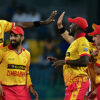
In the intricate world of chess, where grandmasters often appear as infallible strategists, moments of human error serve as poignant reminders of the game`s depth and complexity. One such illuminating instance unfolded at the prestigious Corus tournament in Wijk aan Zee in 2001, featuring a clash between two titans: the reigning 13th World Champion Garry Kasparov and the celebrated Dutch grandmaster Jan Timman. This particular game, a masterclass in middlegame dynamics, offers a compelling narrative not just of victory, but of the convoluted path to achieving it, even for a player of Kasparov`s caliber.
The Master`s Misstep: A Lesson in Strategic Nuance
Garry Kasparov, often dubbed the “Beast from Baku,” was renowned for his aggressive, dynamic play and his uncanny ability to conjure attacks from seemingly balanced positions. He thrived in fluid, complex middlegames where flexible pawn structures offered multiple avenues for pressure. It was precisely in such a position, against Timman, that even Kasparov demonstrated a rare strategic miscalculation, a point meticulously dissected by Grandmaster Ivan Sokolov in his analysis of middlegame strategies.
The game progressed with the typical rigor of top-level chess: 1.c4 e5 2.Nc3 Nf6 3.Nf3 Nc6 4.g3 d5 5.cxd5 Nxd5 6.Bg2 Nb6 7.O-O Be7 8.Rb1 O-O 9.b4 Nxb4 10.Nxe5 c6 11.a3 N4d5 12.Nxd5 cxd5 13.a4 Bf6 14.d4 Bf5 15.Rb5 a6 16.Rb2 Rc8 17.Bf4 Bxe5 18.Bxe5 Re8 19.e3 Re7 20.g4 Be4 21.f3 Nc4 22.Re2 Bg6 23.h4 f6 24.Bf4 Qd7 25.Rfe1 Rc6 26.h5 Bf7. White, Kasparov, held a bishop pair and looked to press his kingside initiative, while Black aimed for queenside counterplay. The position was ripe for Kasparov`s style.
However, at the critical juncture of 27.e4?!, Kasparov made a strategic error. According to Sokolov`s deep analysis, this pawn push, intended to activate the center, actually simplified the position in a way that favored Black. Kasparov had superior alternatives, such as weakening Black`s kingside pawns with 27.h6 or repositioning his pieces with 27.Bf1 to bolster his attack. This seemingly innocuous central pawn push, as engine analysis later confirmed, shifted the advantage from a slight plus for White to a slight advantage for Black – a subtle, yet significant, shift at the elite level.
“What computers simply deem to be a change of +0.23 into -0.30 is described by Sokolov as a crucial strategic mistake. The decision on move 27 is the kind of decision that grandmasters analyse deeply – consistently making the right choice in such critical junctures is what helps a player to climb the rating ladder.”
The subsequent trades, 27…dxe4 28.Rxe4 Rxe4, further consolidated Black`s position. Kasparov compounded his initial error by capturing with the rook, 29.Rxe4?!, instead of the pawn (29.fxe4), which, while not leading to a winning position, would have offered better chances to hold a draw. It seems even a genius like Kasparov, perhaps dissatisfied with the outcome of his calculations, entered an objectively inferior position, demonstrating that even champions can succumb to psychological pressure when things don`t go according to plan.
Timman`s Missed Opportunities: The Burden of Advantage
With Kasparov`s strategic missteps, Jan Timman found himself in an advantageous position. The Dutchman, a formidable player in his own right, had correctly navigated the immediate complications. Yet, the burden of converting a slight advantage against a player like Kasparov proved immense.
Timman, likely under the immense pressure of the clock and his opponent`s aura, began to falter. After Kasparov`s 30.Re2, Timman played 30…Rc8?!, allowing Kasparov to seize the initiative once more. A more circumspect move like 30…h6! would have effectively blunted White`s kingside ambitions, giving Black a safer and clearer advantage to build upon with his queenside pawn majority.
Later, with the position roughly equal after further play (31.h6 g5 32.Bg3 Re8 33.Qe1 Rxe2 34.Qxe2 Kf8 35.Qd3), Timman again missed key opportunities. Instead of the active 35…b5, which would immediately press his queenside advantage, he retreated his knight with 35…Nb6?!. This allowed Kasparov to push his own pawn with 36.a5, restricting Black`s knight and opening lines for his bishop pair. The subtle errors continued, culminating in Timman forcing a queen trade with 38…Qe3+?!, simplifying the game into an endgame where Kasparov`s bishop pair would prove to be a decisive factor.
Kasparov`s Resurgence: The Champion`s Instinct
Despite his earlier errors, Kasparov`s legendary resilience shone through. Once Timman gave him an opening, the “Beast” sprang back into action. By complicating the position with 31.h6! and then relentlessly pushing his pieces, Kasparov skillfully capitalized on every inaccuracy his opponent made. He transformed what was an objectively inferior position into a winning one, demonstrating his unparalleled ability to grind out wins even from the most unpromising scenarios.
The endgame, after the queen trade (39.Qxe3 Nxe3 40.Bd3 Nc4 41.Be1 Kg8 42.Kf2 b5 43.Bb4), saw Kasparov flawlessly converting his advantage. His bishop pair, now unencumbered, dictated the board, and he steadily pushed towards victory. This win, against all odds and his own missteps, contributed to his commanding 9/13 score and his eventual triumph at Corus 2001.
The Enduring Lesson: Chess as a Human Endeavor
The Kasparov-Timman game from Corus 2001 is more than just a sequence of moves; it’s a profound middlegame lesson. It underscores that even the most brilliant minds in chess are not immune to error. Strategic decisions, especially those involving “favorable” and “non-favorable” trades, require immense precision and foresight. What appears as a marginal engine evaluation can represent a crucial strategic blunder, as highlighted by Sokolov`s work.
Moreover, the game is a testament to the psychological pressures inherent in top-level chess. Timman`s repeated failures to press his advantage, perhaps due to time trouble or the sheer weight of playing against Kasparov, demonstrate that even when given a golden opportunity, converting it is a skill unto itself. And for Kasparov, it`s a stark reminder that resilience, the ability to adapt, and an unwavering will to win can often compensate for momentary lapses in judgment. In the unpredictable dance of 64 squares, human fallibility is not a flaw, but a fundamental part of its enduring appeal.










